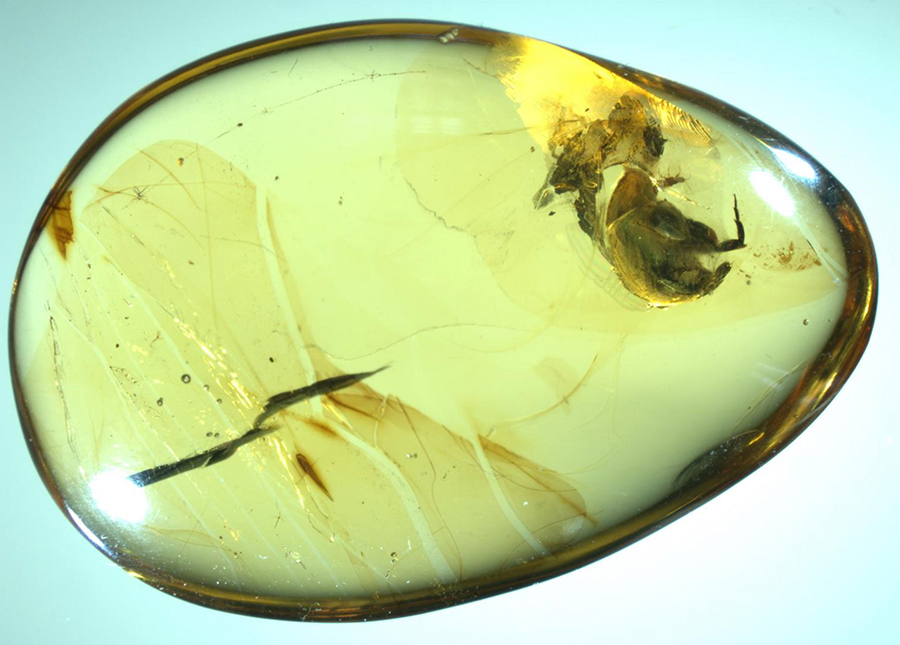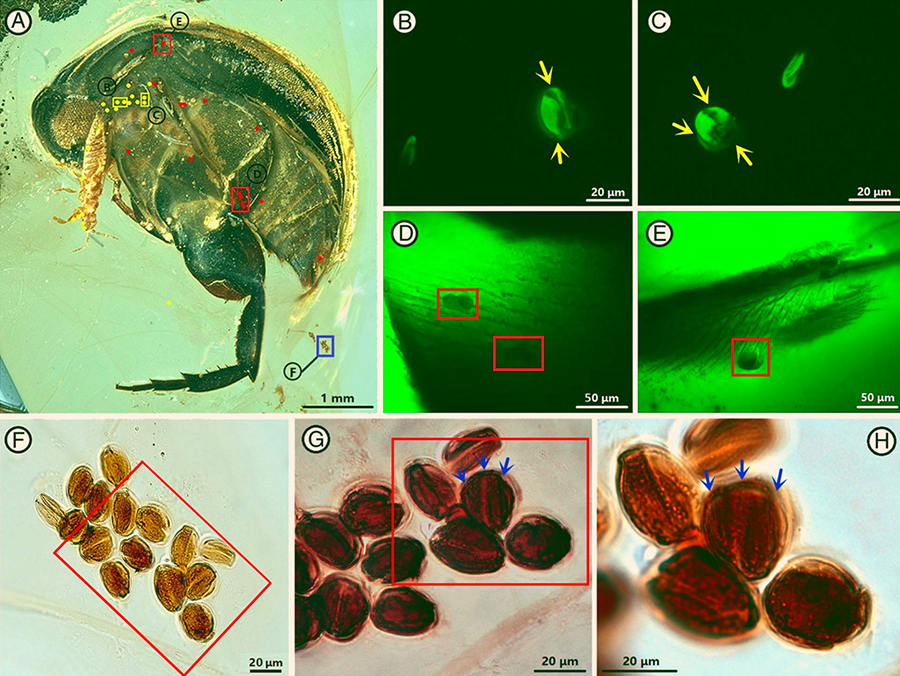99-Million-Year-Old Flower Beetle with Pollen Grains on Its Legs Found Encased in Amber

Since Charles Darwin, insect pollination was thought to be a key contributor to the Cretaceous rise of flowering plants (angiosperms). Both insects and flowering plants were common during the mid-Cretaceous period, but physical evidence for Cretaceous insect pollination of flowering plants was until now absent. An international team of paleontologists from the United States and China has now found an ancient beetle with pollen grains still stuck to its legs trapped in a 99-million-year-old piece of Burmese amber.
“It’s exceedingly rare to find a specimen where both the insect and the pollen are preserved in a single fossil,” said Indiana University’s Professor David Dilcher.
Professor Dilcher and colleagues used optical microscopy, confocal laser scanning microscopy, and X-ray microcomputed tomography (micro-CT) to reveal the morphology of the insect and pollen grains.
The insect in the amber is a previously-unknown species of a tumbling flower beetle (family Mordellidae), which the researchers named Angimordella burmitina.
The beetle’s role as a pollinator was determined based upon several specialized physical structures, including body shape and pollen-feeding mouthparts.
“Aside from the significance as earliest known direct evidence of insect pollination of flowering plants, this specimen perfectly illustrates the cooperative evolution of plants and animals during this time period, during which a true exposition of flowering plants occurred,” Professor Dilcher noted.

The pollen was not easy to find. The powdery substance was revealed hidden in the insect’s body hairs under a confocal laser scanning microscopy.
The analysis took advantage of the fact that pollen grains glow under fluorescence light, contrasting strongly with the darkness of the insect’s shell.
The shape and structure of the pollen shows it evolved to spread through contact with insects.
“These features include the pollen’s size, ‘ornamentation’ and clumping ability,” Professor Dilcher said.
“The grains also likely originated from a flower species in the group eudicots, one of the most common types of flowering plant species.”

Prior to this study, the earliest physical evidence of insect pollination of flowering plants came from the mid-Eocene epoch.
“The prior earliest direct evidence of insect pollination of angiosperm was reported from several pollen-collection bees from the middle Eocene of Eckfeld and Messel (48 and 45 million years old, respectively) in Germany,” Professor Dilcher and co-authors said.
“Our finding thereby extends the known geological range of direct evidence of insect pollination of angiosperm by at least 50 million years.”
The study was published in the Proceedings of the National Academy of Sciences.
_____
Tong Bao et al. Pollination of Cretaceous flowers. PNAS, published online November 11, 2019; doi: 10.1073/pnas.1916186116
Source: www.sci-news.com/








